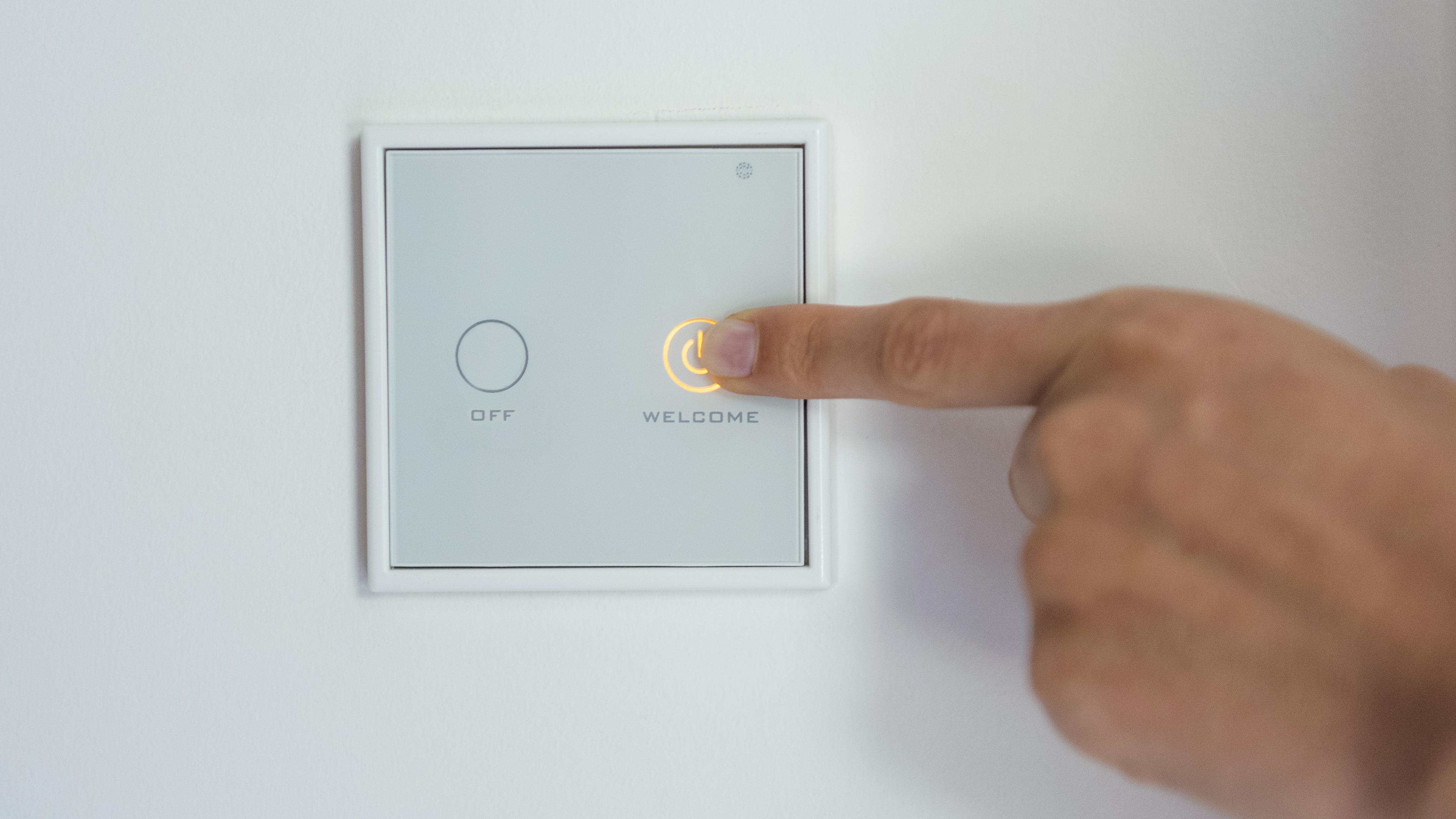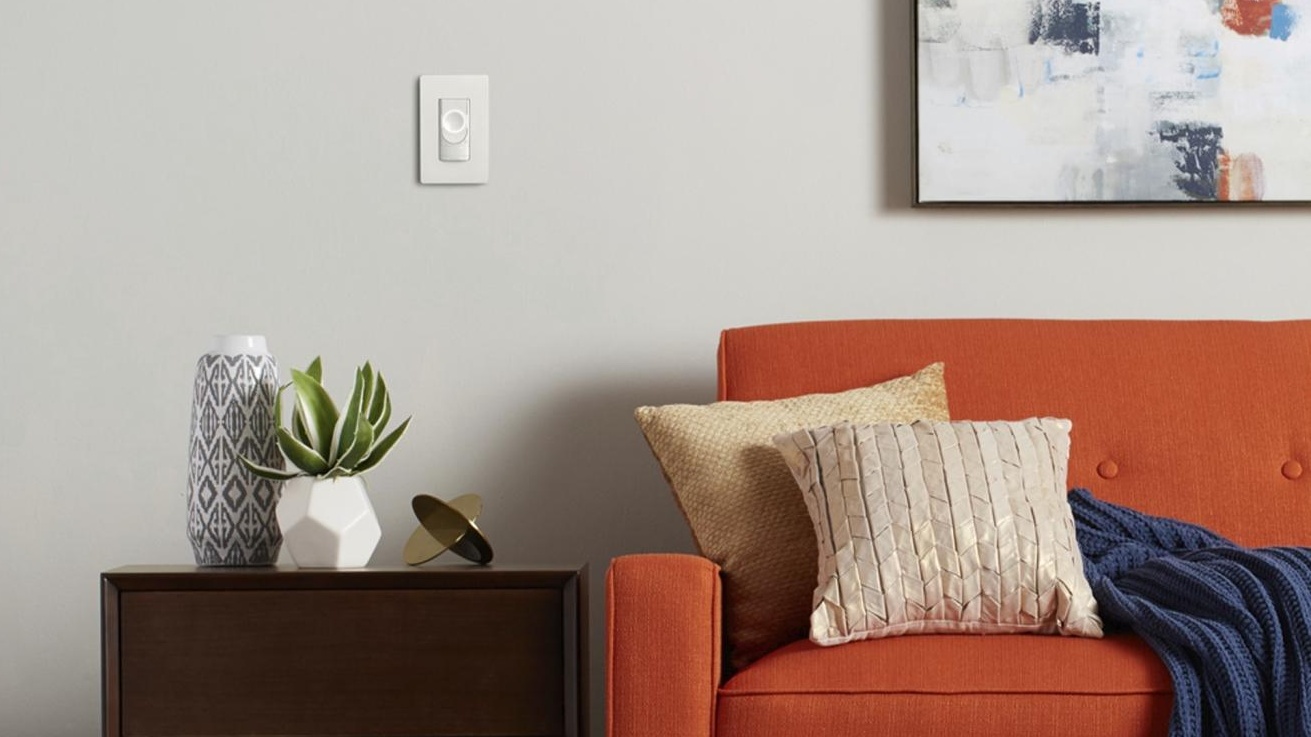DIY smart home: Why I’m using smart switches instead of smart lights
The key differences between smart lights vs. smart switches

This story is part of an ongoing DIY smart home series. Be sure to check out the latest installments to follow the renovation process from start to finish.
Smart light bulbs may be my favorite connected product category, but since I’m creating a DIY smart home, I had to decide whether they’re the right choice for automating my kitchen and living area’s lighting. Alternatively, I could use smart switches.
Both the best smart lights bulbs and best smart switches offer a number of benefits to anyone looking to raise their home’s IQ. Using a smartphone app or voice assistant like Alexa, you can control which lights are on at any given time, as well as adjust the brightness and even temperature. You can incorporate these lighting options into your smart home routines, too.
- Best Alexa compatible devices
- How to use Alexa
- DIY smart home: Why I bought a wine fridge — and you should, too
But there are pros and cons to using one method over the other, several of which I had to weigh before taking the next steps in smart-ifying my parent’s home. We already skipped on smart kitchen appliances and committed to Alexa instead of Google Assistant, so it’s time to start buying actual products.
Here’s the case for smart lights: As long as the bulb shape is compatible with your existing sockets, set up is a breeze. You can install it as you would any bulb, pair it to your home network and voila — you have smart lighting. Some brands like Philip Hue lights offer a special bridge that minimizes strain on your internet, supports dozens of different bulbs and keeps the bulbs functional if your Wi-Fi goes down.
Certain lights also let you adjust their temperature from warm yellow to cool white, and color bulbs totally transform the vibe of any space. These features often come at a higher cost, with Philips Hue charging $50 and Lifx charging $45 for color-capable A19 bulbs — the ones with the familiar light bulb shape. While there are more affordable alternatives — Wyze just announced a color version of the E26 Wyze Bulb, which costs $34.99 for a pack of four, or less than $9 each — I want the best possible products for the 15-ish floodlights and spotlights in our smart home.
The alternative is to use smart light switches, which aren’t as easy to install, but could save money if you have a lot of light sockets. Smart switches cost somewhere between $40 to $60 depending on the brand and features, and can be used with several basic LED bulbs that cost about $1 per piece, or less in bulk. In other words, a single smart switch can be more cost-effective than a set of high-end smart bulbs.
Electrical work can be hazardous, so consult an electrician if you’re unfamiliar with your home wiring. That said, we’re confident we can install some smart switches. This is a DIY project, after all. And despite my love of smart lights, I think we’re going to take this route.
Sign up to get the BEST of Tom's Guide direct to your inbox.
Get instant access to breaking news, the hottest reviews, great deals and helpful tips.
How come? First, our light fixtures need to be organized by group. We’re working with kitchen flood lights, the living room floodlights and the entryways spotlights. And if we use smart bulbs, we’d have to set up each of those bulbs individually, which welcomes headaches with software updates or glitches. Smart light bulbs app and smart assistant platforms let you group bulbs however you want, but that won’t prevent isolated issues.
Second, smart switches provide a manual control that smart light bulbs don’t, unless you purchase a separate smart light remote control. The issue with having an intelligent space is that when you have guests over, they could get tripped up with adjusting our devices. There are also times when me or my family members don’t want to use our voice or smartphones to turn the lights on or raise their brightness. Not to mention times when we’d misplace a remote. With a smart switch, we could use the wall-mounted toggle as we would with a standard switch. Whereas with smart lights, you always need to leave the companion switch flipped on.

Tom’s Guide has tested a number of excellent smart switches. Of them, we’re going to use ones from Cync (formerly C by GE) for the renovation. The C-Start Smart Switch Motion Sensing Dimmer is our top choice, but the company offers an impressive range of smart switches for nearly every kind of electrical wiring, including a 3-wire switch for homes lacking neutral wires.
Be sure to check out my guides to the best smart home devices (and best cheap smart home devices) for more gadget recommendations. Tune back in next week for another DIY smart home installment, and, as always, email me at kate.kozuch@futurenet.com or leave a comment below with anything you’d like to see me cover in the connected space.
Kate Kozuch is the managing editor of social and video at Tom’s Guide. She writes about smartwatches, TVs, audio devices, and some cooking appliances, too. Kate appears on Fox News to talk tech trends and runs the Tom's Guide TikTok account, which you should be following if you don't already. When she’s not filming tech videos, you can find her taking up a new sport, mastering the NYT Crossword or channeling her inner celebrity chef.
-
Terry Hudson I agree that switches are cheaper and more user friendly. I never understood requiring family and guests to change habits to use smart bulbs. Putting tape over a switch so nobody accidentally turns off the smart bulb? Smart homes are supposed to make our lives easier. I actually use both and use Home Assistant for control. That way the switch can turn on any light. I tied the Load to the Line so the bulb is always on. It's more expensive to use both, but it works best for me. I even have dimming working, where the bulb follows the switch state. Love Home Assistant!Reply -
JCStorbeck I also found that using both smart switches and smart lights is the best solution. I was fine using Alexa and my smart phone to control the lights, but my wife pushed back about the complexity and how remembering the names of things or rooms to turn on or off via Alexa was too much. By putting battery powered smart switches in each room she now has the familiar switch in the familiar place to manage the lights. More expensive, but if you are trying to make it actually work for everyone you probably need both smart lights and switches.Reply -
Hal-Jordan The smart bulbs I use (from Feit Electric) go off when you turn off a dumb wall switch. When you turn the switch back on, they come on at 100% intensity and the color is white, no matter what color/intensity they were set for when you turned them off. If someone accidentally turns off the switch, the light will still work when you turn the switch back on. So there's the manual control. No need to put tape on the switch.Reply -
SaleB I also use Home Assistant, but for the reason that I do not have to use an individual app for every type of equipment, and also because most of those independant apps use the internet and some server and some api somewhere to work. With HA everything works with and without internet and if I really need outside access to my system I can eable it or disable it when needed.Reply
I use a combination of store bought smart switches, self made switches, smart electronics and self made modules that smartify older devices.
But, yes, I would concur that the best solution is a combination of various solutions that makes a system fully unique. -
DoItForMe.Solutions "Smartswitches" is often used to refer to both actual switches and the more common dimmers. SmartBulbs can be used, with some limitations, with smart switches, but cannot be used with smart dimmers (the PWM dimming control wreaks havoc with the microcomputer/microprocessor power supply inside all smart bulbs).Reply
I would suggest that you elaborate further on the type of communications used by smartswitches/smart dimmers. Consumers may think Wi-Fi is the only choice, while savvy smarthome buyers know that Philips Hue uses Zigbee and other more hobbyist friendly brands use Z-Wave.
There are pros and cons to all of these wireless protocols, but don't overlook the vendor specific (aka "proprietary") alternatives. The most popular include Insteon (dual mode - both line carrier and RF) and Lutron (433Mhz RF).
I've tried them all and for both technical and business reasons have found Lutron to be far superior. Lutron is rock-solid, does not have the unreliability of Wi-Fi, and the lower frequency band used provides much greater range and reach than other wireless methods. Lutron has chosen to play with everyone and is certified for Apple HomeKit, Google Home, Amazon Alexa and has an API that has been incorporated into most hobbyist/DIY systems including Home Assistant, Hubitat, Smartings, and others.
